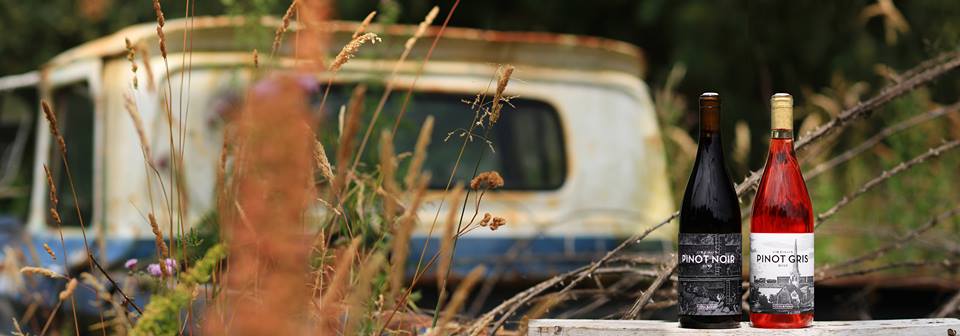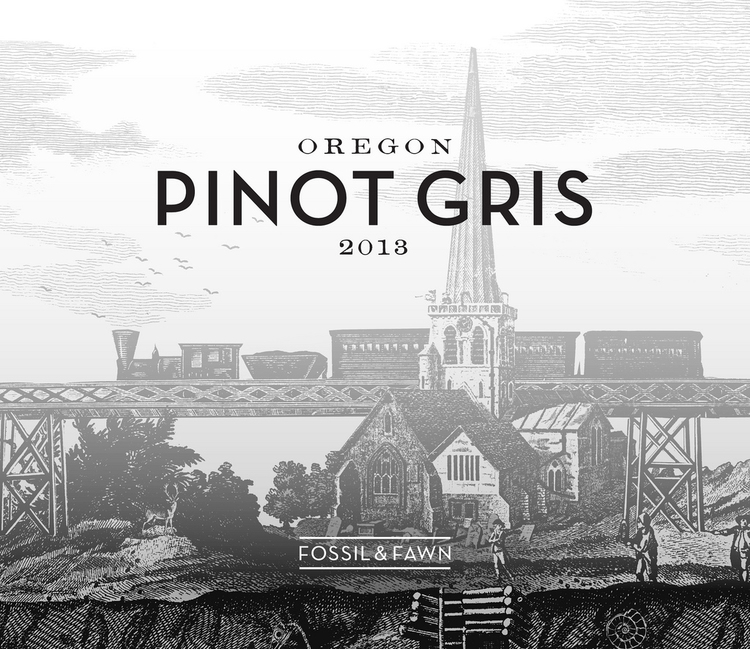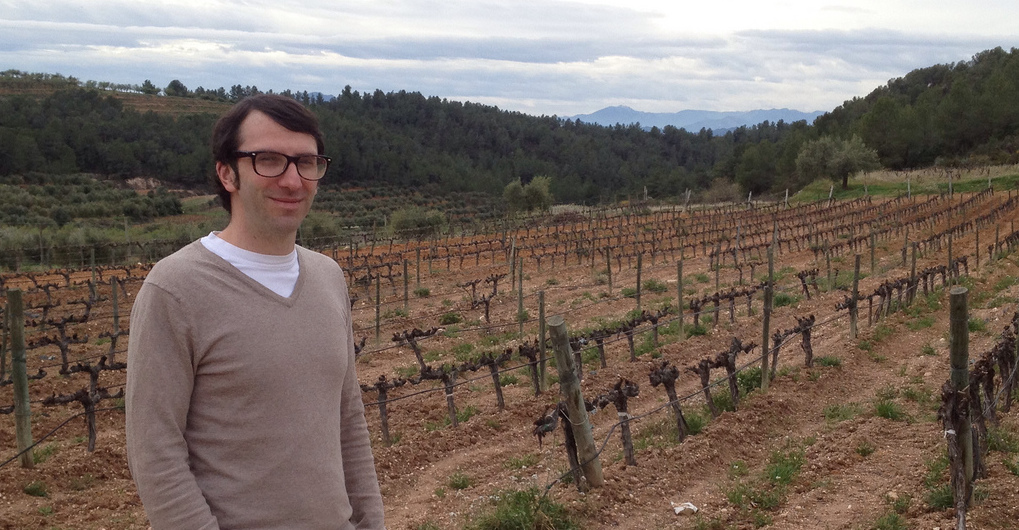
"Look at the color of the wine. Isn't it incredible?"
"Uh, no. It's just purple."
As a wine buyer, I was nonplussed when someone would pour a red wine and expect me to marvel at the color. Looks like red wine to me, pal. Some may be lighter, sure, but nothing is really worthy of OMG! hyperbole or gasp-inducing incredulity.
HOWEVER....
I can say without hesitation that, though not a red wine, I did find the 2013 Fossil and Fawn Pinot Gris, hailing from Willamette Valley's Crowley Station Vineyards, to have an astonishing color. I mean it's a red wine! I mean, a wine that has a red color. Meaning red red, not purple red.
How does it get this hue? Well the skins of the (white) Pinot Gris grape can throw some shade. Not in a disrespectful way, like the withering glance of your sworn enemy, but rather in a manner that adds color and texture to a wine.
I asked winemaker Jim Fischer, whose official title is "Vice President of Wine Things" (his Dad, also Jim Fischer, manages the family's vineyard), to comment on the 2013:
"The wine was kind of an experiment. Initially, I had set out with the notion that I wanted a very faintly peachy-pinky wine. I like Pinot gris, but I feel that there are a lot of really boring/linear approaches to it. I had talked with people that had done skin contact gris before (in one example, they had fermented the wine entirely on its skins for 2 weeks). We determined that a short period--a day or a day and half would yield the color we were looking for. 36 hours later we started draining the juice and were shocked to see how darkly hued it was. Part of me figures it could be a combination of site and vintage, but truthfully, it was much redder than I'd intended. Thankfully, it tasted great, so I think of it as a very happy accident."
So what about the 2014? "For this vintage, I will do things a little differently," Jim divulges. "I plan on doing extended skin contact with a small portion of the grapes (maybe up to 2 weeks). The lion's share will be direct pressed (i.e. no skin contact). Most of it will be barrel fermented with native yeast and I'll encourage a portion of it to go through malolactic fermentation. Finally, I'll try to assemble a blend and hope that all the elements jive together."
In the meantime, enjoy whatever bottles of 2013 Pinot Gris you can get a hold of with outdoors-y grillin' fare. Like grilled steak and zucchini fritters. (Hat-tip Northwest Wine Anthem Worldwide HQ). Jim recommends spaghetti alle vongole or some sheep and/or goat cheese from Willapa Hills. "Also, kinda left field, but it's pretty killer with banh mi (the pâté, pickled veg and crisp bread really work)," he adds.
So what else is Fossil & Fawn up to? They also make a fine Pinot Noir and, Jim reveals, they have a long-term plan for some Chardonnay, Chenin Blanc, and will "maybe do something weird with Nebbiolo."
The veteran retail wine guy in me was also curious about the label. Jenny Mosbacher, the "Deputy Chief of Stuff" at Fossil & Fawn (along with being a cellar rat engaged with sorting grapes, barrel management, bottling, and waxing corks), shared her thoughts on the design and content ethos. (Note: this year is Jenny's debut as more of a true assistant winemaker.)
 "We are young-ish winemakers that are definitely trying to appeal to young-ish wine drinkers in our wine style and packaging aesthetic," Jenny explains. "We find that many of our friends are pleased with the design that is grape variety-forward (and therefore easily identifiable on a shelf), whereas we had to convince our parents that having our name in smaller font was the right choice. After working for years in various wine-selling jobs, a big point of anxiety for many buyers is knowing what they're getting in a wine. Having 'Pinot noir' or 'Pinot gris' prominently stated hopefully takes away a little guess-work.
"We are young-ish winemakers that are definitely trying to appeal to young-ish wine drinkers in our wine style and packaging aesthetic," Jenny explains. "We find that many of our friends are pleased with the design that is grape variety-forward (and therefore easily identifiable on a shelf), whereas we had to convince our parents that having our name in smaller font was the right choice. After working for years in various wine-selling jobs, a big point of anxiety for many buyers is knowing what they're getting in a wine. Having 'Pinot noir' or 'Pinot gris' prominently stated hopefully takes away a little guess-work.
"Same thought process with the Oregon appellation. Technically the wines could be appellated Eola-Amity AVA. But even with now nearly a decade of experience in Oregon wine, I'm not sure for myself how much AVA information bears weight on my buying decisions. To us, Oregon Pinot (noir or gris) and the vintage are the most salient points to get across. Time will tell, I suppose, whether these were smart design decisions or not."
So in the current landscape of the Oregon wine business, where and how does Fossil & Fawn fit in? Jenny continues:
"The ecosystem is big enough to support the third wave, and punk isn't dead yet. The land isn't cheap anymore so we went urban, taking a page from the craft-brew movement, co-opting warehouses. Instead of buying fruit from big-name vineyards, we source from small family operations that farm sustainably and are willing to work with micro-scale winemakers. And since we're all liberal arts grads that work in city restaurants and retail already anyway, we have some connections for wine sales that don't necessitate opening a tasting room (or we just guest pour at cooperative tasting rooms and wine bars). It's a very lean and flexible business model, which is necessary when you're basically not planning on being profitable for the next five years (or more)."
If this DIY story and scrappy, can-do spirit doesn't inspire you to explore Fossil & Fawn, along with more urban wineries in Portland, their wines will provide all the motivation you need.










